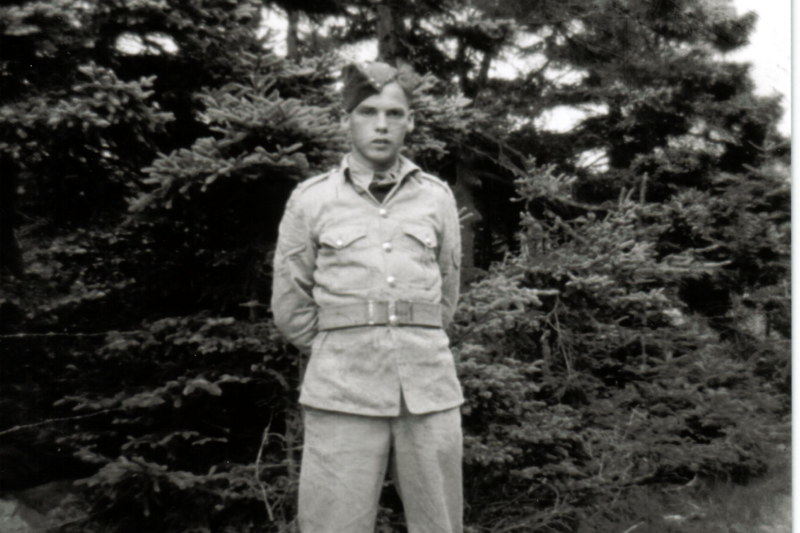Over the next few months U-boats sank a total of 44 ships in Canadian waters with the loss of only two U-boats. The Gulf of St. Lawrence was found to be the richest hunting ground and during what became known as the Battle of the St. Lawrence, U-boats attacked seven convoys, sank 20 merchantmen, a loaded troopship, and two Royal Canadian Navy (RCN) warships. The pièce de résistance, so far as the domestic impact was concerned, was the sinking of the Sydney to Port aux Basques passenger ferry SS Caribou by U-69 on the night of October 13/14, with the loss of 136 people including 10 children. — Heritage Newfoundland
Maxwell McKinnon, a young man from the small Nova Scotia town of Mill Village, was named after his uncle Max who died during the first day of the Battle of Arleux (France) in 1917. When World War II came to Canada, Maxwell enlisted in the Canadian Army in December 1940, two months shy of his 19th birthday. He was 5’8 inches with dark curly hair, a slim build, and a scar on his right wrist. I’ve often wondered how he got that scar.
Like many young men from Nova Scotia, Max was stationed in the North Atlantic Region (Newfoundland) where he found himself protecting the coastal waters from the U-boats that came to the Atlantic to hunt civilian and military ships. Cape Spear is the most Easterly point in North America, and though Newfoundland wasn’t part of Canada until 1949, it was still a staging point for military convoys heading to Europe. As I was growing up, Max often talked about seeing German U-boats surface along the coastline and how he’d fire large artillery shells at these U-boats.
One of the low points for Newfoundland during the war came on October 14, 1942, when the S. S. Caribou was sunk by U-69 while travelling to Port aux Basques from North Sydney, Nova Scotia. Max was supposed to be on the Caribou but missed his connecting train and subsequently the boat. He says it was because he drank too much rum and lost track of time. Thank God for the rum, because my father was born two years later.
While stationed in Newfoundland, Max met his future wife: Eileen Hayes. Their story is often told by a Nova Scotia couple who found Max and Eileen’s courting photos in an old couch and spent years trying to find the original owners. As such, my grandmother became known as the Woman of Mystery in Newfoundland.
